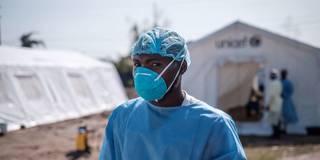Safeguarding Health in a Warming World
As global temperatures and sea levels continue to rise, so, too, does the frequency and intensity of natural disasters and, with them, the risk of deadly epidemics and endemic disease outbreaks. Yet strengthening primary health care, which is the best defense against such devastation, occupies little space on climate agendas.

GENEVA – From infrastructure damage caused by extreme weather events to drought-induced food insecurity, there are many climate risks for which the world should urgently be preparing. But one of the areas where climate change poses arguably the most significant risk is barely being discussed: human health.